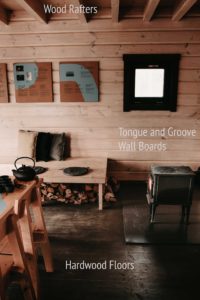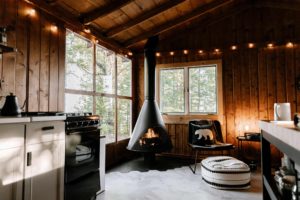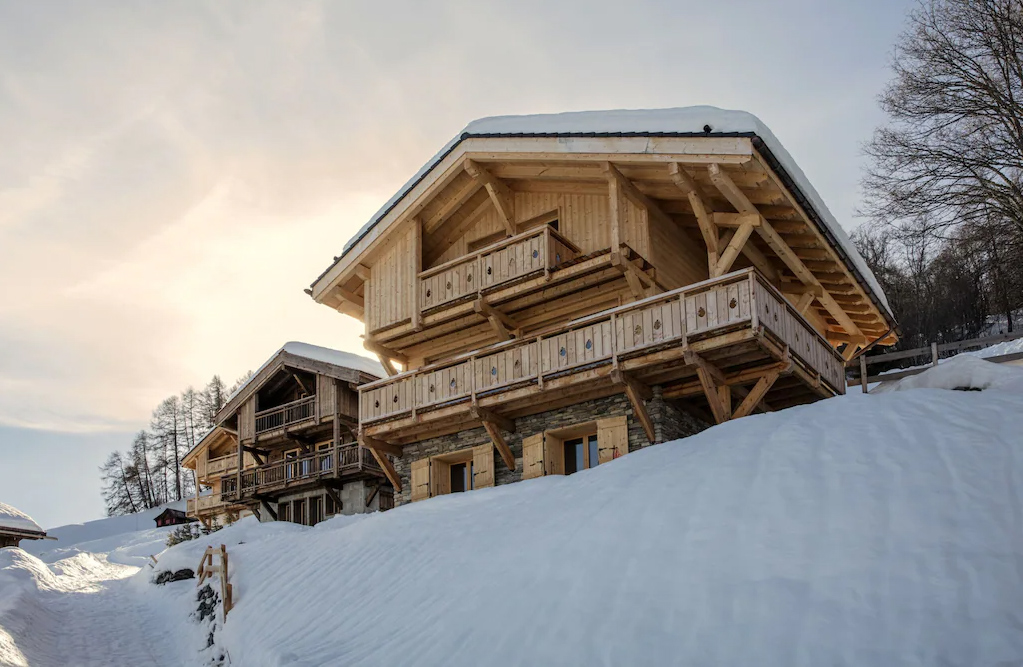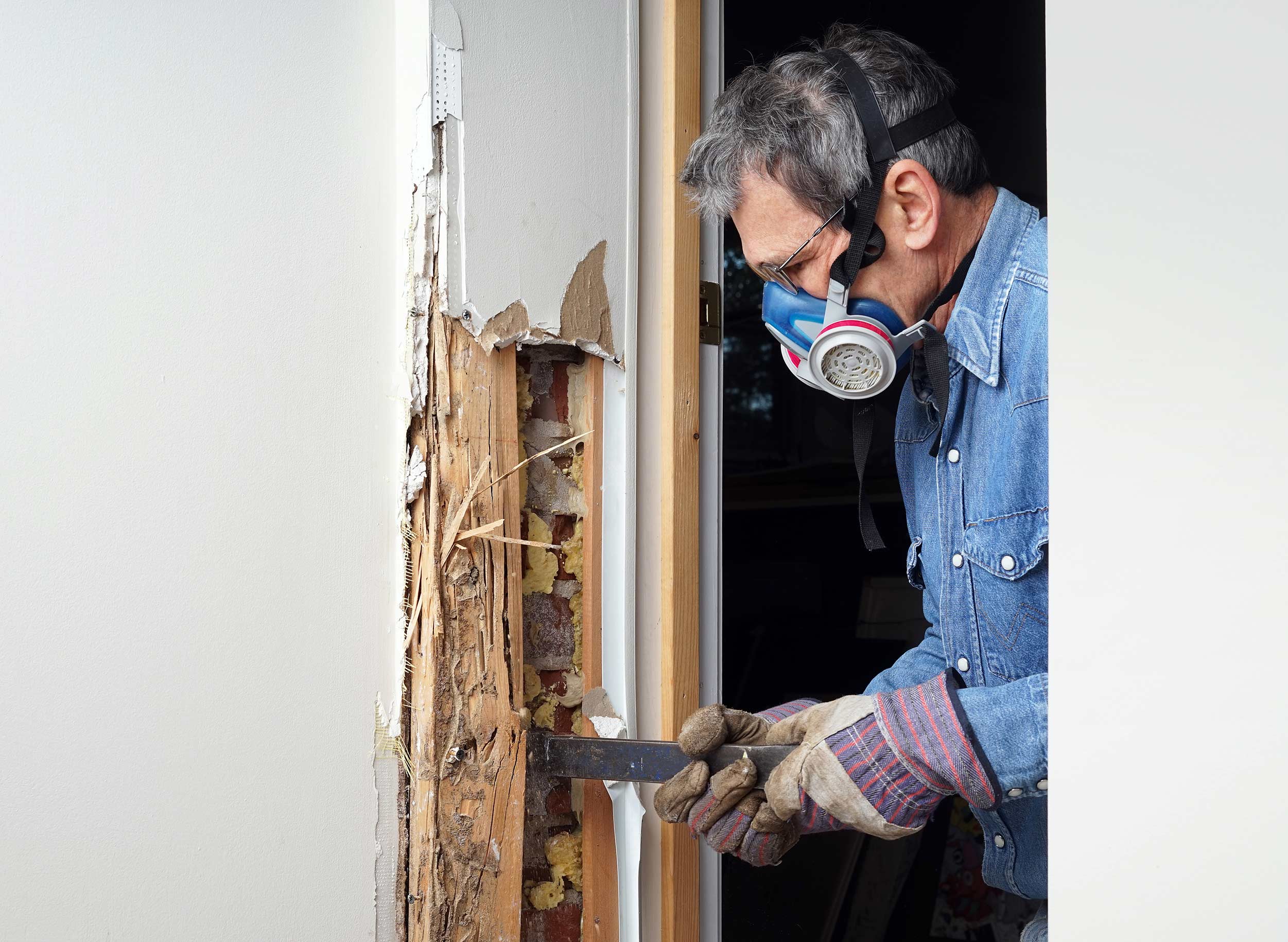A house is the most expensive purchase most people will make, so naturally, many of us are looking for ways to save. Fads for tiny homes, minimalist living, and going off the grid are growing in popularity as a result. But most people still want to live in a full-size home, they just want to do it affordably.
So are log cabins cheaper to build than houses? Traditional houses are cheaper to build than cabins, all things being equal. Cabins are often thought to be cheaper because they tend to be smaller, older, and built on more remote land. They also tend to have fewer modern amenities that drive up the cost of a home. However, for a house of the same size with the same layout, and same features, the cost of construction of a cabin is more expensive than a house.
But there are nuances! So in addition to explaining why traditional homes are generally cheaper to build, I’ll explain how some people are able to build cabins for less than houses. I’ll pack as much information into a short article as I can, so keep reading.
Building Materials
One of the biggest drivers of a home’s cost is lumber. One of the reasons why home prices during the COVID-19 pandemic spiked is because lumber prices were at all-time highs.
 Quite simply, the main reason that building a log cabin is more expensive to build is because it requires more wood. The exterior of a cabin is made of large wood logs, and generally, the interiors feature wood posts and beams, wood railings, pine or cedar tongue-and-groove paneling, and hardwood floors.
Quite simply, the main reason that building a log cabin is more expensive to build is because it requires more wood. The exterior of a cabin is made of large wood logs, and generally, the interiors feature wood posts and beams, wood railings, pine or cedar tongue-and-groove paneling, and hardwood floors.
Traditional homes, on the other hand, can be built much cheaper with vinyl siding on the exterior. Inside, the walls are exclusively drywall which is not only a much cheaper material, but less expensive to install. Drywall comes in 4’ x 8’ sheets and can be hung quickly. It can also be cut quickly and hung less precisely since the edges and seams are simply taped and filled in with joint compound. Wood tongue and groove on the other hand needs to be hung board by board and fit together precisely. Similarly, traditional homes tend to feature more carpet and vinyl flooring which are again cheaper materials and less expensive to install than hardwoods.
This is why national homebuilders like D.R. Horton, Pulte, Ryan Homes, Lennar, and others don’t build cabins! They’re competing to provide the most affordable housing. They keep their sales prices down by keeping their material costs down. Log cabins on the other hand tend to be built by local custom builders, particularly in mountainous regions. They’re usually built in lower volume on individual lots rather than mass produced in 300 lot communities.
However, one of the ways you could save by building a cabin is by cutting down trees on your property to use for construction. Cabins are often built in more remote, wooded locations. Homesteaders and bushcrafters, for example, make use of the materials on their property to build their homes and live self-sufficient lifestyles. If you bought a wooded property, felled your own trees, milled your own lumber, and built your own cabin, you could, in fact, build a log cabin for much cheaper than buying from a lumber yard, having materials delivered to your homesite, and building a traditional home.
Floor Plans and Finishes
 Construction costs are driven by square footage – quite simply, the bigger the house, the more materials required to build it. And one of the reasons why many people believe log cabins are cheaper to build than houses is because cabins, on average, are smaller than houses.
Construction costs are driven by square footage – quite simply, the bigger the house, the more materials required to build it. And one of the reasons why many people believe log cabins are cheaper to build than houses is because cabins, on average, are smaller than houses.
When we imagine a budget-friendly cabin we generally imagine a small cozy, cabin with a modest kitchen, comfy living room, and tight sleeping quarters.
Our connotations of cabins don’t generally include long, luxurious kitchen islands, rows of cabinets, and commercial grade appliances. We don’t imagine an owners bathroom with a glass shower, separate soaking tub, dual vanity sink and walk-in closets. As a matter of fact, we may not even imagine central air conditioning and forced air heat!
We often imagine heating our cabins with a wood-burning stove or a fireplace, and we probably don’t even consider AC because we presume it’ll be cold at our mountain cabin.
The reality is, people believe cabins are cheaper than houses because they tend to imagine an 800 sq ft cabin with minimal amenities. But the true question of whether a cabin is cheaper to build than a house is not whether an 800 sq ft cabin is cheaper to build than a 2,000 sq ft house. The question is whether a cabin can be built for cheaper than a traditional home of equal size and comparable features. And the answer is, unfortunately, no.
Land Costs
Cabins are typically found in remote locations where the land is much cheaper. One of the misconceptions about log cabins being so affordable is really because they tend to be built on more affordable land.
Land can be one of the most expensive components of a home purchase. A home in Boise, Idaho, for example, might be 7x cheaper than the SAME EXACT home in San Francisco, California. This is simply because of the land cost.
As you move from a major city to its surrounding suburbs to rural land to the middle of nowhere, land prices decrease. Cabins tend to be far from major cities, so it’s commonly assumed that cabins are cheap when the reality is the land is cheap, not the construction costs. If a traditional home was built on the same land far out from a city, it would likely be even cheaper than the cabin.
Utilities
And finally, it’s worth noting that as you move further away from metropolitan hubs, it’s less likely that utilities will be available. We take for granted that public water and sewer are available in our cities, but in remote locations, many property owners have to resort to well water and septic systems.
It should be noted that whether you build a traditional home or cabin, the same utilities will be available to you at your property. So this does not impact the cost comparison of a house to cabin. However, if you’re reading this article because you’re seeking an affordable construction or because you’re considering moving out into the wilderness, it’s important to know that being outside of town can bring additional expenses. Most notably, the cost of installing a well and septic system can come at a hefty price tag.
The biggest cost driver for a well will be how deep you have to drill to hit water. And the biggest cost driver for a septic system will be the quality of the soils on your property. A large property shouldn’t have an issue absorbing wastewater because it would have room for a larger drain field, but a 1/2 acre lot on septic, for example, would require the right kind(s) of soil to be able to absorb wastewater with little land to do it. Upgrading to an alternative septic system can be extremely expensive. Regardless of the systems you install, well and septic could be tens of thousands of dollars each. The cost of tapping into public water and sewer would generally be much less.
If your goal is to live “off the grid,” there are ways to do it affordably, though. Rather than installing septic systems, some owners will install composting or incinerating toilets. Rather than digging a well, some owners will harvest rain water. You can even use solar panels for electric systems, use wood burning stoves for heat and so forth.
You can eliminate costs by using the resources of the land, but it’s important to realize that if you’re not paying for the construction of your home in dollars, you will be paying for it in time and labor. And if you don’t truly have the knowledge or experience to do the construction yourself, you will pay for it in time, labor, and then dollars when you ultimately have to hire a professional to complete the work you botched.
Conclusion
Verdict – Are Log Cabins Cheaper to Build Than Houses?
It should be clear at this point that the cost of construction of a cabin is more expensive than the cost of a traditional home of the same size and specification level. Many of the reasons why cabins are perceived as cheaper homes is simply because they tend to be smaller, offer fewer modern features, and are built on less expensive land.
However, if you’re looking to build a cabin in a more remote location, you can take advantage of cheaper land prices. You can also take advantage of the resources on the land, particularly its lumber to reduce material costs significantly. However, it takes an immense amount of skill and effort to build your own cabin. If the notion of channeling your inner Henry David Thoreau and building your cabin in the woods is appealing though, I’ll be your biggest cheerleader. And I’ll even come photograph it and feature it on the @stiksandbriks Instagram page.
Cabin vs. Chalet – What’s the Difference?
As you’re scouring AirBNB and VRBO looking for your next mountain getaway, you may notice yourself choosing between the type of home to stay at. Both platforms offer filters for property type, two of those choices being “cabin” and “chalet.” So, what’s the difference, and…
What are Examples of Hygge | 8 Tips to Achieving the Hygge Aesthetic
@alpenglowcabin What Does ‘Hygge‘ Mean? The term ‘Hygge’ (pronounced “hoo-gah”) is described as “cozy” and “comfortable;” however, its meaning extends beyond a design aesthetic. It also represents a mood and a lifestyle that focuses on being oneself and finding pleasure, gratitude, simplicity and beauty in all things. It has no exact…
Are Cabins At Greater Risk Of Termite Damage? Prevent Termites From Damaging Your Cabin
Cabins are at greater risk of termite damage than a traditional home because termites are attracted to wood, a cabin’s most prominent building material. Additionally, cabins are more susceptible to a termite infestation because cabins are often found in more remote, wooded locations where termite populations are high. However, termite infestations can be prevented with proper building practices and general maintenance. If termite damage is found early, termites can be treated affordably. Here are the best ways to prevent termites from ruining your cabin.



